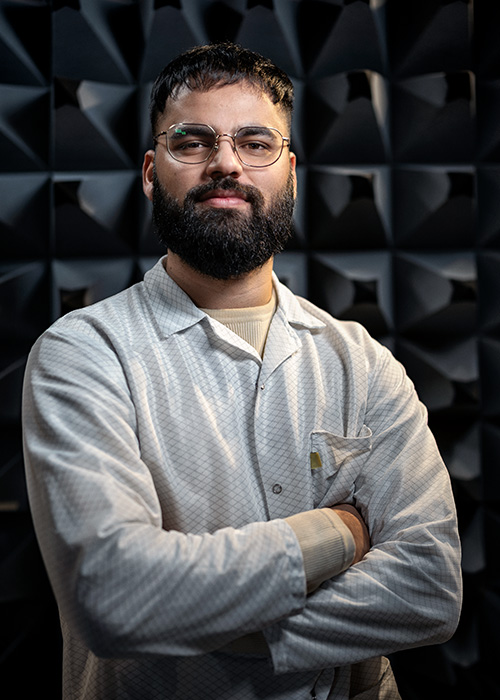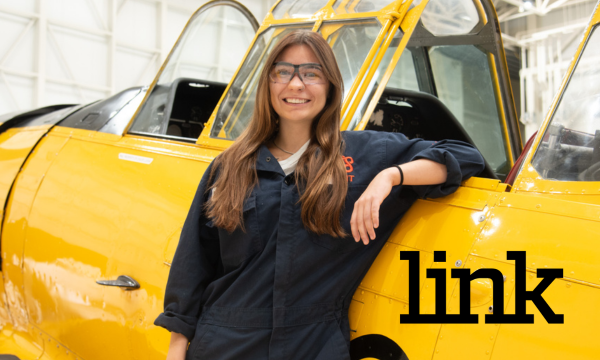 For most of his 29 years, Umer Shaukat (GET ’18) (pictured right) has felt like he was running — always pushing towards the next opportunity, willing to take risks and unafraid of feeling uncomfortable in pursuing the next big thing.
For most of his 29 years, Umer Shaukat (GET ’18) (pictured right) has felt like he was running — always pushing towards the next opportunity, willing to take risks and unafraid of feeling uncomfortable in pursuing the next big thing.
Luckily for Shaukat, the job promotion he received last April has brought him a role that is anything but comfortable.
As an automotive applications specialist for Calgary-based global autonomy and positioning company, Hexagon, Shaukat is contributing to the world’s race for the first truly autonomous car — one that never requires human intervention but uses geospatial technology, machine learning, artificial intelligence and other digital technologies to operate itself. It’s a vehicle that is fully self-sufficient — and it hasn’t been achieved yet.
Even with his extensive technical expertise in geomatics — such as remote sensing, global navigation satellite system (GPS) technology and digital mapping — Shaukat is on a steep learning curve.
“We’re talking about industry’s best right here in Calgary,” he says.
“Where there might be autonomous driving needs, which is what I focus on, I help automotive companies get their production vehicles or test vehicles up to standard.
“We're supposed to be experts on this stuff, and that just takes time — you can’t rush that. It's like I’m walking now, not running,” he continues.
“Still, the pace is a lot faster, but somehow it manages to give me life.”
Until recently, Shaukat had only dreamed of working for a global high-tech company.
“I come from Pakistan, where the education level differs,” he says. Growing up Shaukat watched his parents sacrifice much to ensure he had opportunities they hadn’t, and he’s always kept this in the back of his mind.
“My dad especially worked really hard for us,” Shaukat says. “I want to make him proud. So, I try to do my best so those sacrifices are justified.”
Rewind about eight years: Shaukat, feeling admittedly lost inside, walked into a SAIT Open House. He left mesmerized by GPS technology and soon enrolled in the Geomatics Engineering Technology program, planning to become a land surveyor.
Relentlessly curious, Shaukat was constantly learning more about satellites and information systems, even while working in business development for a small geomatics firm. But he soon realized he didn’t want to just be an end user of the latest positioning technology — he wanted to help create it.
So Shaukat started working at Hexagon in a 24/7 technical support role and, determined to fully use his skills, has advanced to become one of their foremost troubleshooters.
“Being here is unreal,” he says. “Uncomfortable situations and taking every opportunity to push myself to learn — those are themes of my whole career.”

Like what you are reading?
Find more stories from past, present and upcoming issues of LINK magazine!
Oki, Âba wathtech, Danit'ada, Tawnshi, Hello.
SAIT is located on the traditional territories of the Niitsitapi (Blackfoot) and the people of Treaty 7 which includes the Siksika, the Piikani, the Kainai, the Tsuut’ina and the Îyârhe Nakoda of Bearspaw, Chiniki and Goodstoney.
We are situated in an area the Blackfoot tribes traditionally called Moh’kinsstis, where the Bow River meets the Elbow River. We now call it the city of Calgary, which is also home to the Métis Nation of Alberta.